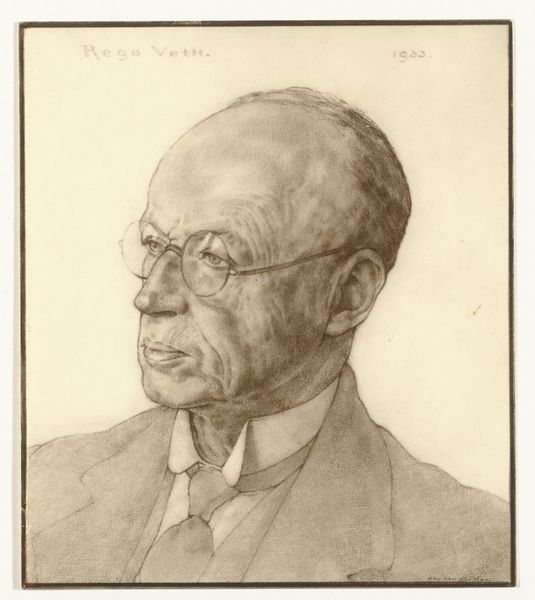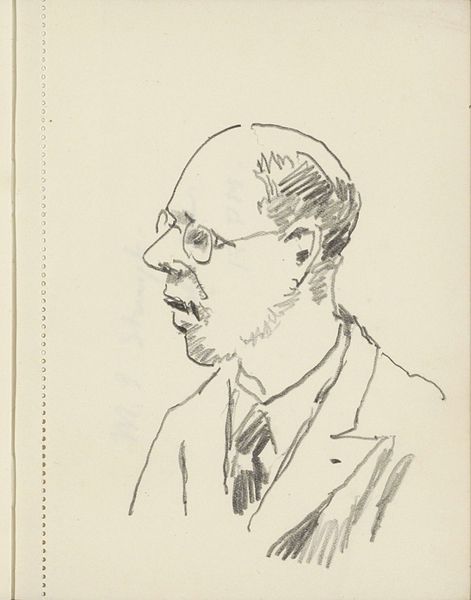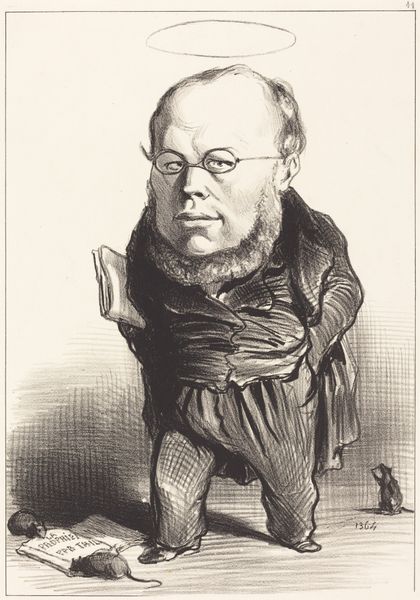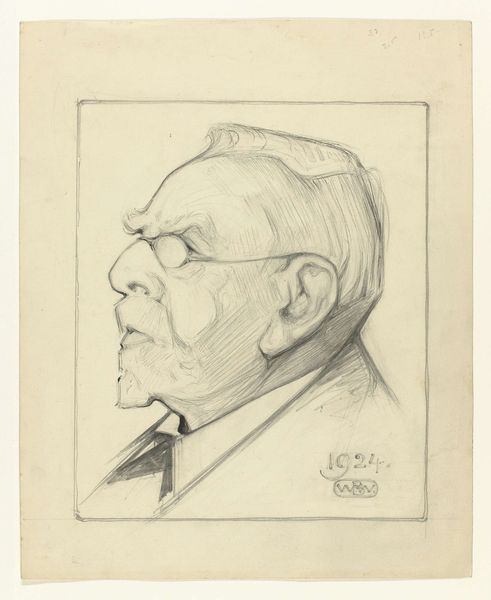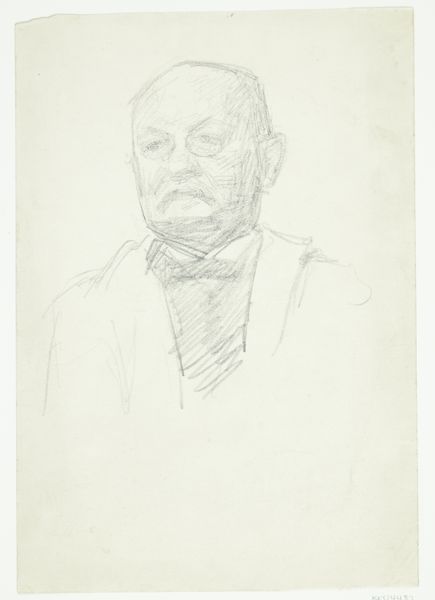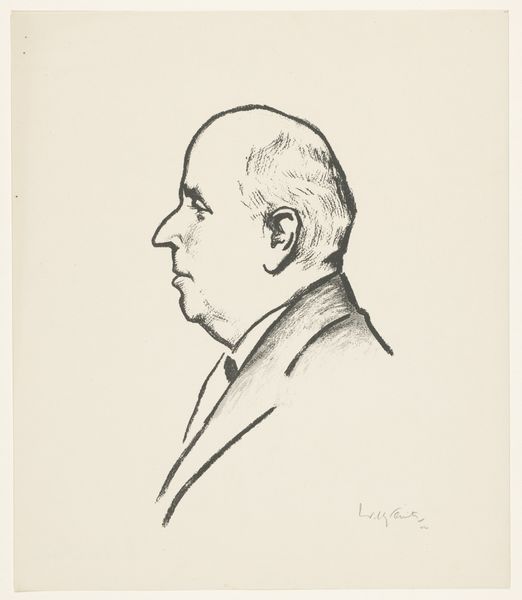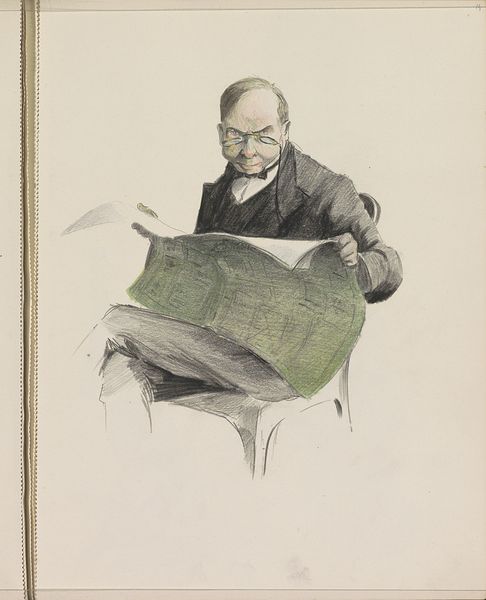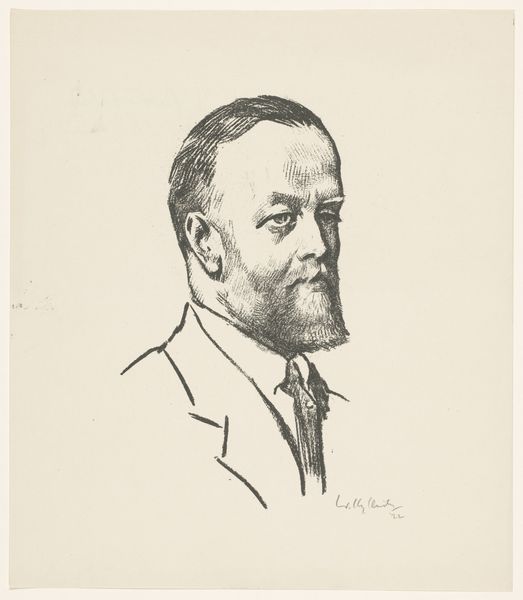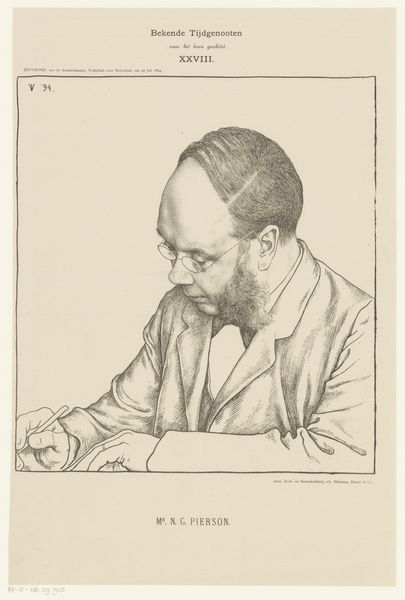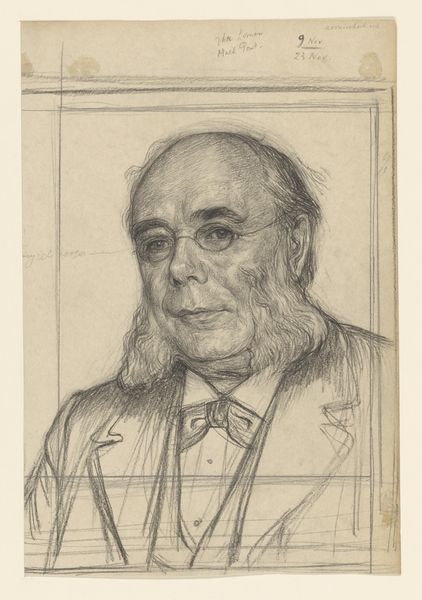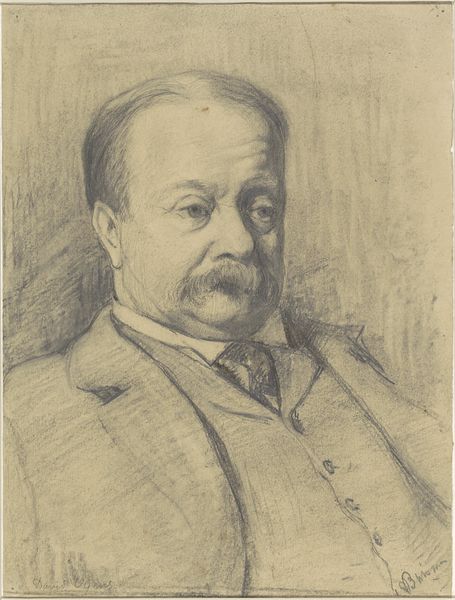
drawing, pencil
#
portrait
#
pencil drawn
#
drawing
#
caricature
#
figuration
#
pencil
#
line
#
portrait drawing
#
academic-art
#
realism
Dimensions: height 320 mm, width 230 mm
Copyright: Rijks Museum: Open Domain
Curator: Here we have Theodorus Henricus Kerstel's pencil drawing, "Portret van Nicolaas Gerard Pierson," which dates from around 1897 to 1935. It's currently housed right here at the Rijksmuseum. Editor: The immediate impression is one of slightly… gentle satire? The lines are incredibly precise, but there's a hint of caricature in the exaggerated features that creates a compelling visual tension. Curator: Kerstel often explored the nuances of public figures through portraiture, revealing something of their inner character through subtle exaggerations. The glasses, for example, act as a mask and magnifier, hinting at Pierson's intellectual standing but also, perhaps, a certain guardedness. What do they mean to you? Editor: Well, formally, the glasses introduce circular forms into an otherwise angular composition, softening the overall effect. Also, it frames his face with perfect balance. Semiotically, glasses often symbolize intelligence and education, acting almost as a halo that lends dignity and intellect. Curator: Yes, exactly! But that dignity is subtly undermined by the rendering of the facial hair, which is meticulous, almost comical. It’s the trappings of seriousness and responsibility. Nicolaas Pierson was a prominent figure—Prime Minister of the Netherlands, finance minister—and the artist is commenting, maybe even critiquing, those heavy social roles. It shows us how men displayed their manliness with specific, cultural trends. Editor: That’s interesting. From a purely technical point of view, the drawing exemplifies the mastery of line and tonal variation achievable with simple graphite. See how the artist subtly suggests depth and form without relying on heavy shading? This, alongside the cross-hatching of lines that almost feels three-dimensional. Curator: A testament to careful observation and skillful rendering. It captures a particular moment, a certain type of man, but it also echoes timeless themes about power, perception, and presentation of the self in society. Editor: Ultimately, it’s the balance between careful observation and slight embellishment that makes this piece so engaging and a striking example of portraiture from the turn of the century. Curator: Precisely, a visual document and a playful commentary—layers of meaning in a few well-placed lines.
Comments
No comments
Be the first to comment and join the conversation on the ultimate creative platform.
